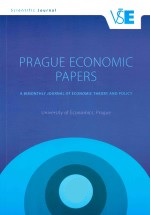Univariate and Bivariate Volatility in Central European Stock Markets
Univariate and Bivariate Volatility in Central European Stock Markets
Author(s): Claudiu BoţocSubject(s): Economy
Published by: Vysoká škola ekonomická v Praze
Keywords: volatility; asymmetry; structural breaks; contagion;multivariate GARCH;
Summary/Abstract: This paper examines if the volatility exhibits a symmetric or an asymmetric response to past shocks, particularly the relevance of structural breaks for Central European (hereinafter referred to as “CEE”) stock markets. In addition, it is of great interest to see if the CEE emerging markets are correlated with other emerging ones, as well as to analyse the correlation with the developed markets, for optimizing investment portfolios. Using a CEE group approach (regional index) and daily data from 2002 to 2015, the results suggest that markets react differently to similar negative and positive returns, except for the rapid growth period, when the greed sentiment dominates the markets. Furthermore, the structural break dates affect volatility, the highest asymmetric coefficient being recorded for the pre-crisis period. For the bivariate approach, the emerging markets and developed markets indexes provided by the Morgan Stanley Capital International (hereinafter referred to as “MSCI”) have been considered and the results suggest that CEE stock markets are correlated with emerging stock markets rather than developed ones. For both pairs, the correlation is consistently higher for the break dates characterized by an increase in volatility, which is in line with the literature that claims that the co-movements increase when international factors dominate the national ones, and influence stock markets.
Journal: Prague Economic Papers
- Issue Year: 26/2017
- Issue No: 2
- Page Range: 127-141
- Page Count: 15
- Language: English

